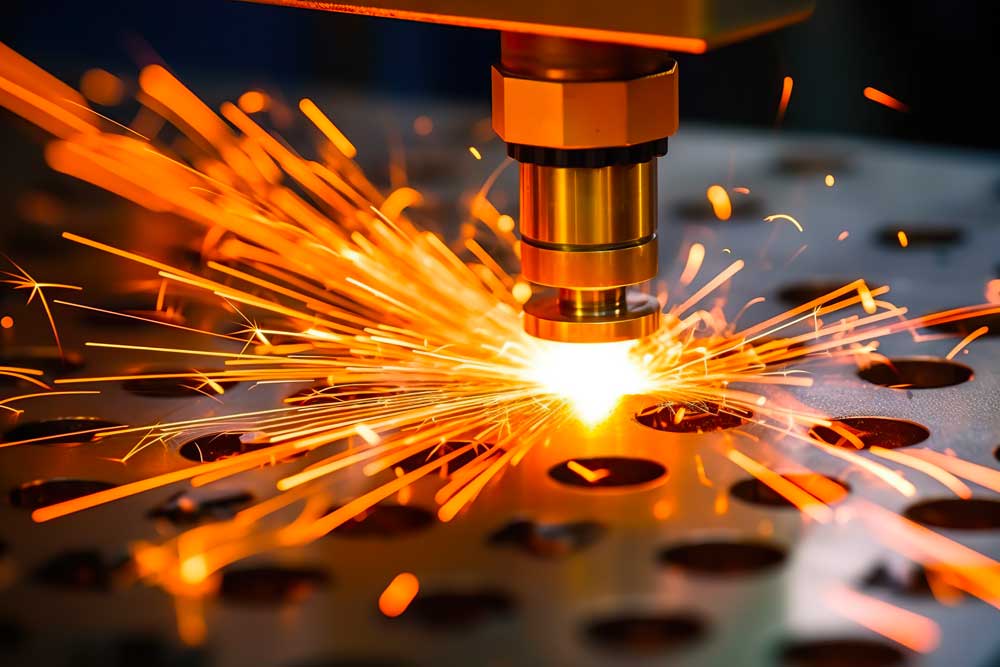In the metal production sector, innovation is driving transformative changes, influencing CEOs and entrepreneurs in the industry. As technology advances, so too does the metal production sector, affecting everything from the way materials are sourced to the final product that reaches consumers. This article explores the impacts and insights surrounding innovation in metal production and how it is revolutionizing the industry.
Metal production, especially in the age of sustainability and environmental responsibility, has become a focal point for industry leaders. This article sheds light on how these innovations affect CEOs and entrepreneurs, addressing the needs of the industry’s top decision-makers.
The top countries* in the world for metal production in 2023 are:
Let’s first take a look at which are the top metal-producing nations in the world.
Metal production is a key indicator of economic development. Countries with a strong metal industry tend to have a strong economy. The top 10 countries in the world for metal production in 2023 are China, Australia, Russia, Brazil, India, the United States, Canada, Indonesia, and Peru. China is the world’s leading producer of metal, accounting for over 40% of global production. Australia, Russia, Brazil, India, and the United States are the other top producers.
| Rank | Country | Production (metric tons) |
| 1 | China | 1.6 billion |
| 2 | Australia | 1.4 billion |
| 3 | Russia | 1.3 billion |
| 4 | Brazil | 1.2 billion |
| 5 | India | 1.1 billion |
| 6 | United States | 1 billion |
| 7 | Canada | 900 million |
| 8 | Indonesia | 800 million |
| 9 | Peru | 700 million |
*The data is from the World Steel Association.
What are the most innovative technologies used in metal production?
Innovative technologies are the backbone of modern metal production. From advanced smelting techniques to cutting-edge machinery, these innovations are driving efficiency, sustainability, and cost-effectiveness in the industry. Some of the key innovations include:
- Advanced Smelting Techniques: New smelting processes are reducing energy consumption and emissions while improving metal purity.
- Digitalization and Automation: Smart technologies are streamlining production processes, enhancing precision, and minimizing human error.
- Recycling Methods: Innovations in recycling methods are reducing the need for virgin raw materials, making metal production more sustainable.
- Sustainable Sourcing: Companies are increasingly looking for sustainable sources of raw materials, reducing their environmental footprint.
- Additive Manufacturing: 3D printing and other additive manufacturing techniques are revolutionizing how metal products are created, enabling complex designs and reducing waste.
How has innovation changed the metal production process over the years?
The evolution of metal production over the years has been marked by remarkable advancements. Traditional, resource-intensive methods have given way to more sustainable, efficient, and cost-effective processes. Some of the notable changes include:
- Reduced Environmental Impact: Innovations have led to cleaner production methods, lowering emissions and resource usage.
- Cost Reduction: Streamlined processes and recycling initiatives have decreased the overall production costs.
- Increased Product Quality: Advanced technologies have improved product quality, making them more durable and reliable.
- Shorter Production Cycles: Automation and digitization have significantly reduced production timelines.
What challenges do companies face in implementing new technologies in metal production?
While the benefits of innovation in metal production are evident, companies often face several challenges when adopting new technologies. These challenges can include:
- High Initial Costs: Investing in new technologies can be expensive, and not all companies may have the financial resources to make the transition.
- Training and Skill Gaps: Implementing advanced technologies may require retraining the workforce or hiring new talent with specific skills.
- Compatibility Issues: Integrating new technologies into existing processes can be complex and may lead to unforeseen compatibility issues.
- Regulatory Compliance: Meeting evolving environmental and safety regulations can be challenging for companies striving to innovate.
How has innovation affected the metal market and competition among companies?
The impact of innovation in metal production is felt across the entire market. Companies that embrace these innovations gain a competitive edge. Innovations lead to:
- Market Differentiation: Companies that adopt cutting-edge technologies can distinguish themselves from competitors, attracting eco-conscious consumers and clients.
- Cost Advantage: Innovations lead to cost savings, allowing companies to offer competitive pricing while maintaining profitability.
- Sustainability Leadership: Innovators in metal production can position themselves as sustainability leaders, attracting environmentally aware customers and investors.
In conclusion, innovation in metal production is not only changing the way we produce metal products but also reshaping the industry’s competitive landscape. CEOs and entrepreneurs are presented with opportunities to reduce costs, enhance product quality, and lead the way in sustainability. GME Recycling is at the forefront of this transformation, with a commitment to sustainable circular models and a legacy of innovation in the non-ferrous recycling world.
At GME Recycling, our purpose is to create sustainable circular models through meaningful innovation. With over 40 years of combined experience, we continue to engineer production models that radically reduce the usage of virgin raw materials. Our more than 25 plants across three continents recycle over 1.0 million tons of wasted material annually, setting the standard for environmentally responsible metal production. Join us in embracing innovation for a sustainable future.
Comments are closed.

